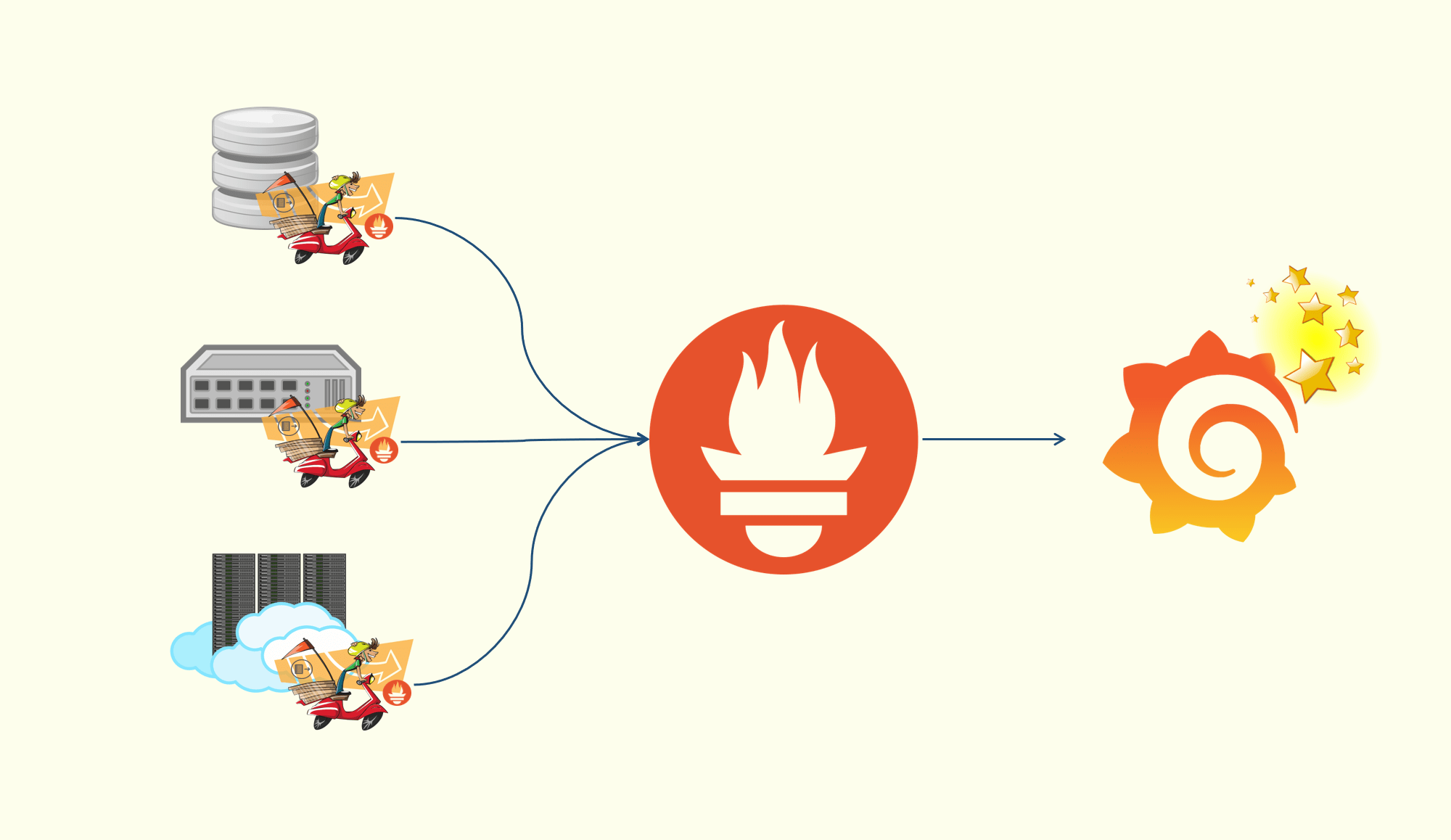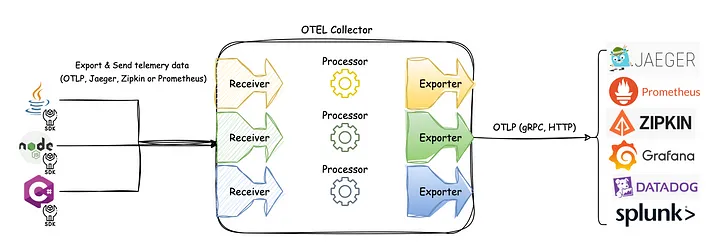Go Engineering - Foundation - CLI
CLI Cobra 很好地集成了 Pflag 和 Viper 工具包 用途 Pflag 命令行参数解析 Viper 配置文件解析 Cobra 命令行框架 Pflag Pflag 通过创建 Flag 和 FlagSet 来使用,使用 Pflag 的开源项目:Kubernetes、Istio、Helm、Docker、Etcd Flag 一个命令行参数会被解析成一个 Flag 类型的变量 1234567891011121314// A Flag represents the state of a flag.type Flag struct { Name string // name as it appears on command line Shorthand string // one-letter abbreviated flag Usage string // help message ...
Go Engineering - Foundation - Log - Package
开源日志包标准库 log 包 标准库自带,无需安装 只提供 Print、Panic、Fatal 函数用于日志输出 Go 标准库大量使用了该 log 包 glog Kubernetes 使用的 klog 是基于 glog 进行封装 Google 推出的轻量级日志包 特性 支持 4 种日志级别: Info、Warning、Error、Fatal 支持命令行选项 支持根据文件大小切割日志文件 支持日志按级别分类输出 支持 V level – 开发者自定义日志级别 支持 vmodule – 开发者对不同的文件使用不同的日志级别 支持 traceLocation – 打印指定位置的栈信息 logrus Github star 数量最多的日志包,Docker 和 Prometheus 也在使用 logrus 支持常用的日志级别 可扩展:允许使用者通过 Hook 的方式,将日志分发到任意地方 支持自定义的日志格式:内置支持 JSON 和 TEXT 结构化日志记录:Field 机制允许使用者自定义字段 预设日志字段:Default Field 机制,可以给一部分或者全部日志统一添加共同的日志字段...
Go Engineering - Foundation - Log - Design
功能需求基础功能 支持基本的日志信息:时间戳、文件名、行号、日志级别、日志内容 支持不同的日志级别:Trace(可选)、Debug、Info、Warn、Error、Panic(可选)、Fatal 期望级别:glog.Info("This is info message") 开关级别:glog -v=4,只有日志级别高于等于 4 的日志才会被打印 支持自定义配置:不同的运行环境,需要不同的日志输出配置,在不重新编译代码的情况下,改变记录日志的行为 支持输出到标准输出(实时读取)和本地文件(采集索引) 高级功能 支持多种日志格式:TEXT、JSON 按日志级别分类输出:至少 Error 级别的日志输出到独立的文件中 支持结构化日志:使用 JSON 或者其它编码方式使日志结构化 支持日志轮转:借助 Linux Logrotate 来完成,不在日志包中实现 具备 Hook 能力 例如:当 Error 级别的日志产生时,发送邮件或者调用告警接口进行告警 日志告警的最佳方案:通过旁路功能,将日志采集到第三方组件(如 ES),日志包功能应尽量内聚 1234567891011121...
Go Engineering - Foundation - Error - Package
功能需求 支持错误堆栈 支持不同的打印格式,例如 %+v、%v、%s 等 支持 Wrap/Unwrap 功能:在已有 error 的基础上,追加一些新的信息 errors.Wrap(err, "open file failed") 调用 Wrap 时,会生成一个错误堆栈节点 支持 Is 方法:判断某个 error 是否为指定的 error Go 1.13 之前,并没有 wrapping error if err == os.ErrNotExist {} 有 wrapping error 后,直接用 == 判断会有问题,因为可能是 wrapping error func Is(err, target error) bool err 和 target 是同一个 当 err 是 wrapping error 时,target 包含在这个嵌套 error 链中 支持 As 函数 Go 1.13 之前,并没有 wrapping error,可以使用 type assertion 或者 type switch if perr, ok := err...
Go Engineering - Foundation - Error - Code
设计方式 场景:用户账号没有找到 200 HTTP Code 通常代表的是 HTTP Transport 层的状态信息;但对性能有一定的影响,因为需要解析 HTTP Body 12345678{ "error": { "message": "Syntax error \"Field picture specified more than once. This is only possible before version 2.1\" at character 23: id,name,picture,picture", "type": "OAuthException", "code": 2500, "fbtrace_id": "xxxxxxxxxxx" }} 4xx + 简单信息 可以让客户端快速感知请求失败,但提供的信息过于简单,不能准确地定位问题 ...
Go Engineering - Foundation - API Doc
Swagger Swagger 是一套围绕 OpenAPI 规范构建的开源工具,可以设计、构建、编写和使用 REST API Swagger 工具 Swagger Editor 基于浏览器的编辑器,可以在其中编写 OpenAPI 规范,并实时预览 API 文档 Swagger UI 将 OpenAPI 规范呈现为交互式的 API 文档,并可以在浏览器中尝试 API 调用 Swagger Codegen 根据 OpenAPI 规范,生成服务器存根和客户端代码库 Swagger vs OpenAPI OpenAPI 是一个 API 规范,前身也叫 Swagger 规范 通过定义一种用来描述 API 格式或者 API 定义的语言,来规范 RESTful 服务开发过程 目前最新的 OpenAPI 规范是 OpenAPI 3.0 (即 Swagger 2.0) OpenAPI 规范定义了一个 API 必须包含的基本信息 描述、路径和操作、输入输出参数、验证方法等 OpenAPI 是一个 API 规范,而 Swagger 是实现规范的工具 go-swagger特性 基于代码注释自动生...
Go Engineering - Foundation - Linting
golangci-lint 优点 速度快 基于 gometalinter 开发,平均速度比 gometalinter 快 5 倍 并行检查代码 + 复用 go build 缓存 + 缓存分析结果 可配置 支持 YAML 格式的配置文件 IDE 集成 VS Code + Goland Linter 聚合器 集成了很多 Linter,无需单独安装,并且支持自定义 Linter 最小误报数 调整了所集成的 Linter 的默认设置,大幅减少误报 良好的输出 检查出问题的源码文件、行号和错误行内容 不符合检查规则的原因 报错的 Linter 更迭速度快 不断有新的 Linter 被集成进来 使用者:Google、Facebook、Istio、Red Hat OpenShift 等 golangci-lint 命令 cache123456789$ golangci-lint cache statusDir: /Users/zhongmingmao/Library/Caches/golangci-lintSize: 1.9MiB$ golangci-lint cache clea...
Go Engineering - Foundation - RD
功能需求 为 iamctl 新增 helloworld 命令,该命令向终端打印 hello world 开发阶段代码开发 选择 Git Flow:适用于大型非开源项目 创建分支 基于 develop 分支,新建一个功能分支 feature/helloworld 1$ git checkout -b feature/helloworld develop branch 名要符合 Git Flow 的分支命名规范,会通过 pre-commit 的 githook 来确保分支名符合规范 123$ md5 ./githooks/pre-commit ./.git/hooks/pre-commitMD5 (./githooks/pre-commit) = 3324d20a738461f3b6347f9ce7dae6b6MD5 (./.git/hooks/pre-commit) = 3324d20a738461f3b6347f9ce7dae6b6 ./.git/hooks/pre-commit123456789101112131415161718#!/usr/bin/env bashLC_A...
Go Engineering - Foundation - Makefile
使用 先编写 Makefile 文件,指定整个项目的编译规则,然后通过 Linux make 命令来解析该 Makefile 文件,实现自动化 默认情况下,make 命令会在当前目录下,按照 GNUmakefile、makefile、Makefile(推荐)的顺序查找 make -f golang.mk 或者 make --file golang.mk 规则 规则一般由目标、依赖和命令组成,用来指定源文件编译的先后顺序 Makefile 规则可以自动判断是否需要重新编译某个目标,从而确保目标仅在需要时编译 规则语法 主要包括:target、prerequisites 和 command 1234target ...: prerequisites ... command ... ... target 可以是一个 object file,也可以是一个执行文件,还可以是一个标签 可以使用通配符,当有多个目标时,使用空格分隔 prerequisites:代表生成该 target 所需要的依赖项,当有多个依赖项时,使用空格分隔 command:代表该 target ...
Go Engineering - Foundation - API - RPC
RPC Client 通过本地调用,调用 Client Stub Client Stub 将参数打包(Marshalling)成一个消息,然后发送这个消息 Client 所在的 OS 将消息发送给 Server Server 接收到消息后,将消息传递给 Server Stub(或者 Server Skeleton) Server Stub 将消息解包(Unmarshalling)后得到消息 Server Stub 调用服务端的子程序,处理完成后,将最终结果按照相反的步骤返回给 Client gRPC概述 gRPC:google Remote Procedure Call gRPC 是由 Google 开发的高性能、开源、跨语言的通用 RPC 框架,基于 HTTP 2.0,默认使用 Protocol Buffers 序列化 gRPC 的特点 支持多语言 基于 IDL(Interface Definition Language)文件定义服务 通过 proto3 生成指定语言的数据结构、服务端接口和客户端 Stub 通信协议基于标准的 HTTP/2,支持特性:双向流、消息头压缩、单 T...















